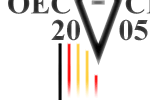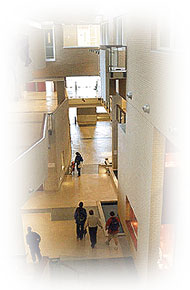 |
 |
 |
 |
 |
 |
 |
|
The Ontario Engineering Competition (OEC) is an annual competition that is hosted by a different Ontario engineering school each year. Originally called the Ontario Engineering Design Competition (OEDC), the Ontario Engineering Competition was the brainchild of Diane Neil and the Queen's University Engineering Society in 1980. The first competition encouraged students to compete in three categories (the Open Competition, the Industrial Competition, and the Communications Competition). With only eight members on the organizing committee, the competition attracted 56 students in 29 entries and set a high standard for the competitions to follow. A group of Waterloo engineering students, impressed by the competition, was interested in continuing with OEDC and an annual event was born. Still only three categories, the Open Competition and the Industrial Competition were renamed to the now familiar Entrepreneurial Design and Corporate Design in 1981. Another major addition in 1981 was the introduction of Major Patrons for each of the competition's three categories. In 1982, at the University of Toronto, the Communications Category split into Editorial Communications and Explanatory Communications bringing the number of categories to four and setting the core structure of the competition that would remain for nearly a decade. The organizing committee had risen to 14 members and the annual budget had grown to more than $26,000. Over the next three years, the prestige and professionalism of the competition rose to the point where students all across Canada had become aware of OEDC. With OEDC as a blueprint, three other regional competitions and the national Canadian Engineering Design Competition (CEDC) were born, with the first CEDC held in 1985. |
|
|
OEDC continued with four categories until the Sandford Fleming Foundation, who were disappointed with the attendance of their engineering debating competition, approached OEDC and suggested a merger. Held on a trial basis at first, the organizers of OEDC '91 at the University of Waterloo added a fifth category called Extemporaneous Communications. Since renamed to Parliamentary Debate, the debating category has become a mainstay, albeit sometimes controversial, part of the competition. In 1992, while at the University of Ottawa, the competition changed its name to the Ontario Engineering Competition to reflect the fact that the competition, and engineering in general, is about much more than engineering design. In addition, in order to acknowledge the fact that Canada is a bilingual nation, Compétition d'Ingénierie de l'Ontario (CIO) was officially added to make the name OEC-CIO, which remains to this day. The competition added a new design category in 1997 when the Organizing Committee at McMaster added the sixth category, Team Design, to the competition. To this point, the competition had two design and two communications categories that required considerable preparation and one impromptu communications category. The idea behind Team Design was that this new category could fill the void and create an impromptu design category. An added benefit was that Team Design would be limited only to junior students. This way, first year students could have an avenue to learn about the rest of the competition, while not at a disadvantage competing against the more experienced and educated senior students. |
|
|
This year at Waterloo, Team Design has officially become First Year Team Design, and a seventh category of Senior Team Design has been introduced. While the Junior Team Design provides opportunity for exposure to the competition, the Senior Team Design is meant to truly showcase the quick thinking and verstility of an engineering team, and includes presentation and justification components to keep the level of challenge appropriate for upper year engineers. Over the past 25 years, this prestigious competition has seen tremendous growth. In this new millennium, the Ontario Engineering Competition is looking forward with excitement to the next 25 years and beyond. |
 |